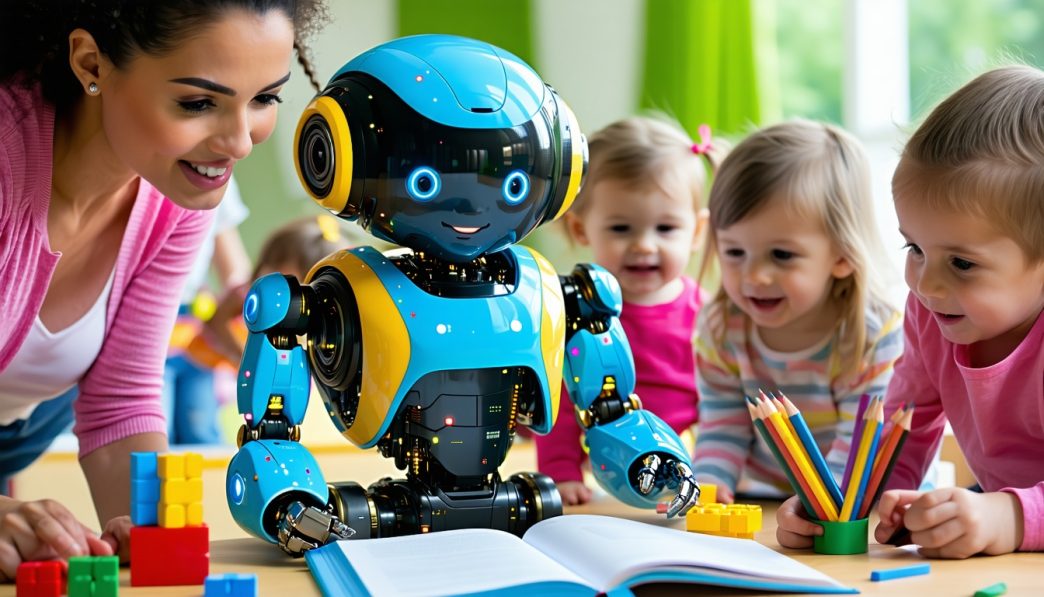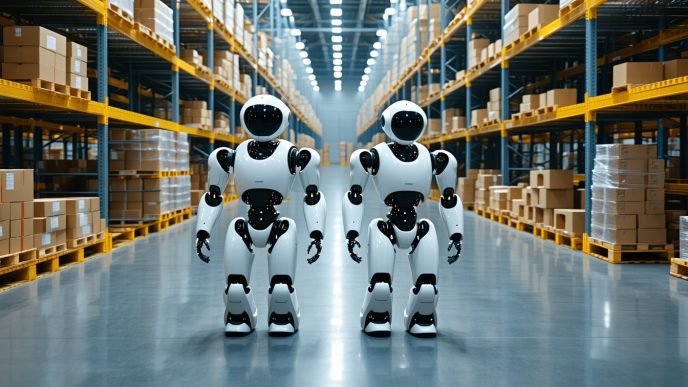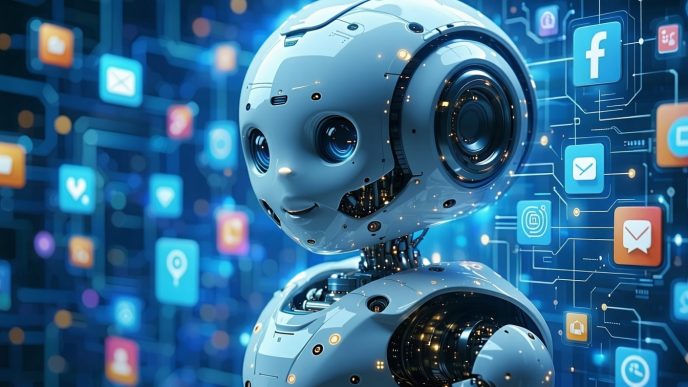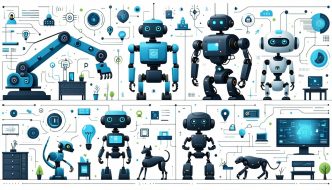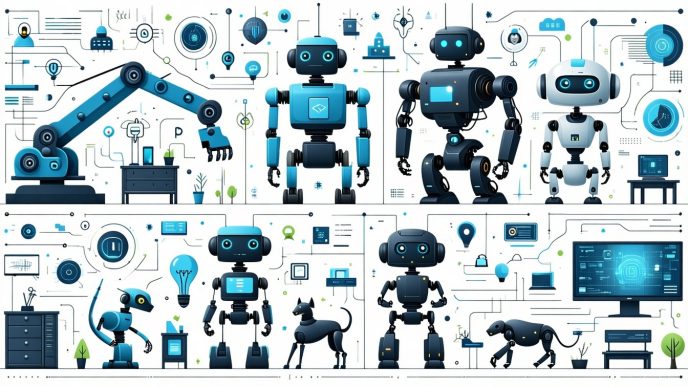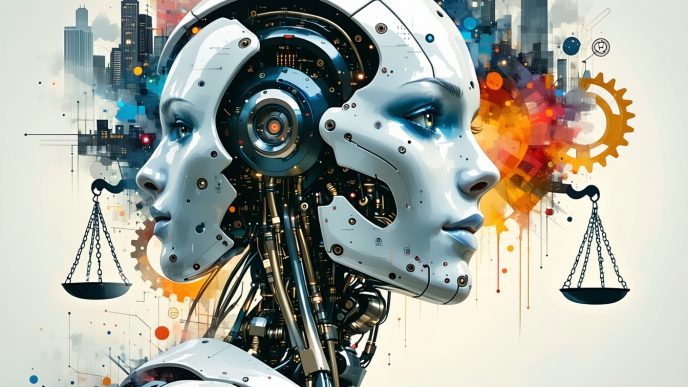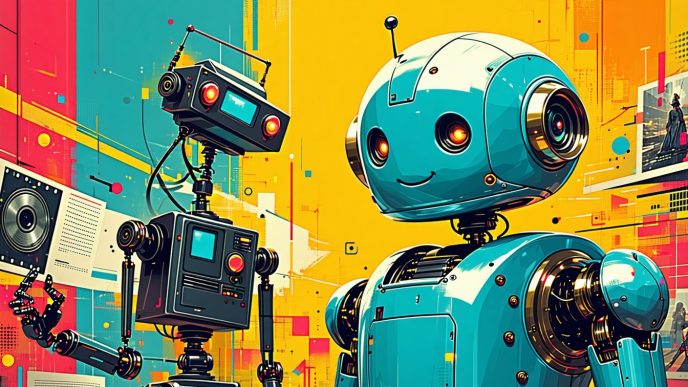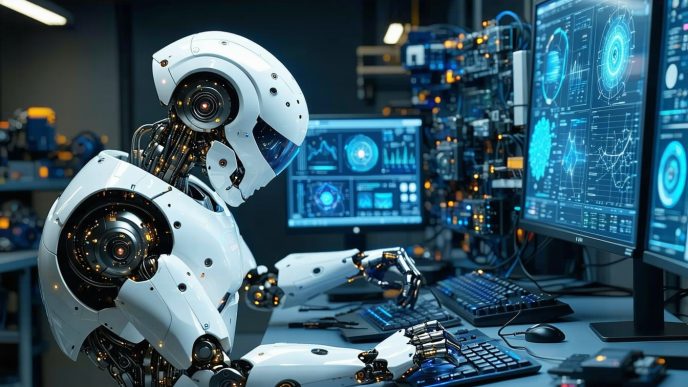Introduction to Humanoid Robots for Children
Defining Humanoid Robots
Humanoid robots are machines designed to resemble the human form in appearance and behavior. These robots often feature a head, torso, arms, and legs, enabling them to perform tasks and interact in ways similar to humans. The design of humanoid robots allows them to engage more naturally with children, making them more relatable and easier to communicate with.
| Key Characteristics | Description |
|---|---|
| Appearance | Human-like structure with arms, legs, and a head |
| Interaction | Capable of verbal and non-verbal communication |
| Mobility | Designed to move in a manner similar to humans |
The Growing Role of Robots in Children’s Lives
The integration of technology into everyday life has led to an increase in the presence of robots in children’s environments. Schools, homes, and recreational settings are increasingly incorporating humanoid robots to enhance learning and social interaction. This growing prevalence provides children with unique opportunities to interact with technology in an engaging and educational manner.
Humanoid robots can serve various roles such as educational aids, companions, or even play partners. By using humanoid robots, children can explore new concepts in a fun way, fostering creativity and problem-solving skills. For more insights into educational applications, see our article on humanoid robots for education.
Purpose of Humanoid Robots for Kids
The primary purpose of humanoid robots for children is to facilitate learning, provide companionship, and support emotional development. These robots can be programmed to assist with educational content, helping to reinforce lessons in STEM (Science, Technology, Engineering, and Mathematics) subjects, while also making the learning process more interactive.
Here are some specific functions that humanoid robots may serve for children:
| Purpose | Examples |
|---|---|
| Educational | Teaching coding through interactive play |
| Companionship | Providing support and social interaction for children |
| Emotional Support | Offering companionship to tackle feelings of loneliness |
The role of humanoid robots extends beyond mere novelty. They have the potential to significantly impact children’s social, cognitive, and emotional development while preparing them for a future with increasing reliance on technology. To understand more about the safety and effectiveness of using robots, refer to our section on safety concerns.
Safety Concerns
As humanoid robots become increasingly integrated into the lives of children, understanding the potential safety concerns is paramount. It is crucial for parents and guardians to examine the risks and ensure safe interaction with these advanced machines.
Potential Risks Associated with Humanoid Robots
Humanoid robots may present various safety risks. These risks can arise from mechanical malfunctions, inappropriate programming, or even emotional dependence. Below is a summary of notable potential risks:
| Risk Factor | Description |
|---|---|
| Mechanical Failure | Robots can malfunction, posing physical risks. |
| Inappropriate Behavior | Poor programming can lead to harmful actions. |
| Emotional Dependence | Children may develop unhealthy attachments. |
| Interaction Risks | Close contact can lead to accidents or injury. |
Recognizing these risks allows caregivers to implement preventive measures. Regular maintenance and monitoring of the robots can help manage some of these concerns, ensuring they operate safely.
Ensuring Safe Interaction with Robots
To promote safe interactions between children and humanoid robots, several guidelines can be observed. These practices help to create a secure environment for encounters with technology.
- Supervision: Adults should always oversee interactions to guide safe behavior.
- Safety Features: Choose robots equipped with advanced safety systems, such as emergency shut-off.
- Programming Control: Ensure the robots are programmed to avoid dangerous actions or movements.
- Education: Teach children about safe practices when interacting with robots, including proper handling and respectful communication.
- Regular Updates: Keep the software of the robot up to date to mitigate vulnerabilities in safety protocols.
Through these precautions, the benefits of using humanoid robots for kids can outweigh the risks, fostering a positive and educational experience for children.
Educational Benefits
Humanoid robots have increasingly found their way into various educational settings, demonstrating the potential to support and enhance learning experiences for children. This section highlights how these robots can significantly affect educational development and promote essential skills.
How Humanoid Robots Can Enhance Learning
Humanoid robots can facilitate a more engaging learning environment through interactive and hands-on experiences. They can serve as teaching assistants, guiding children through subjects like math, science, and language arts. Features such as voice recognition and responsive programming allow robots to interact with children in personalized ways.
The following table illustrates some specific educational functions of humanoid robots:
| Educational Function | Description |
|---|---|
| Tutoring | Robots can provide one-on-one tutoring, adapting to each child’s learning pace. |
| Language Learning | They can assist in language acquisition, practicing conversation and vocabulary. |
| Science Experiments | Robots can demonstrate scientific concepts in a fun, interactive manner. |
| Coding Skills | Learning to program robots fosters problem-solving and critical thinking skills. |
By integrating with the curriculum, humanoid robots can make abstract concepts more tangible, motivating children to engage more deeply with their studies.
Encouraging STEM Skills in Children through Robotics
Humanoid robots play a vital role in encouraging interest in STEM (Science, Technology, Engineering, and Mathematics) fields. As children interact with robots, they develop foundational skills in coding, robotics, and engineering concepts, which are critical in today’s technology-driven world.
The following table outlines how humanoid robots can support STEM education:
| STEM Skill | How Humanoid Robots Facilitate Learning |
|---|---|
| Coding | Children learn to code by programming the robot’s movements and responses. |
| Engineering | Designing and building robots helps children understand engineering principles. |
| Mathematics | Robots can solve problems that require mathematical reasoning, reinforcing concepts. |
| Technology | Interacting with robots exposes children to emerging technologies and applications. |
Through hands-on learning experiences, humanoid robots inspire curiosity and foster a long-term interest in STEM fields. For more information on the role of robots in education, visit our article on humanoid robots for education.
In summary, humanoid robots provide unique educational benefits by enhancing learning experiences and promoting essential STEM skills among children. These innovations can greatly influence children’s educational journeys, preparing them for future opportunities in various fields.
Social Interaction
Humanoid robots offer unique opportunities for children to enhance their social skills and develop communication abilities. These interactions with robots can be particularly beneficial in educational settings and at home.
Facilitating Social Development in Children
Humanoid robots can play a significant role in fostering social skills among children. Through playful and interactive experiences, robots can engage children in conversations and activities that simulate real-life social interactions. This can help children practice important social cues, such as turn-taking, sharing, and empathy.
Research indicates that children who interact with humanoid robots tend to exhibit heightened engagement and participation in group activities. These robots can also model appropriate responses in social situations, allowing children to learn and adapt their own behavior in a constructive way.
| Benefits of Social Interaction with Robots | Description |
|---|---|
| Improved Communication Skills | Children learn how to articulate their thoughts and feelings. |
| Enhanced Social Awareness | Robots guide children in recognizing and responding to social cues. |
| Building Trust and Friendships | Regular interaction with robots can foster a sense of companionship. |
Impact of Humanoid Robots on Communication Skills
The presence of humanoid robots can positively impact communication skills by encouraging children to express themselves verbally and non-verbally. These robots often utilize voice interfaces, making it easier for children to engage in conversations and learn how to communicate effectively.
Moreover, humanoid robots equipped with advanced AI features can adapt their responses based on a child’s interaction style. This encourages children to speak and interact more freely, allowing them to practice language skills in a low-pressure environment. One study showed that children interacting with humanoid robots improved vocabulary and conversational skills through repeated engagement.
| Communication Skills Improved | Description |
|---|---|
| Vocabulary Expansion | Exposure to new words and phrases through interactive dialogue. |
| Listening Skills | Children learn to listen attentively and respond appropriately. |
| Non-Verbal Communication | Recognition and use of body language and facial expressions in interactions. |
By facilitating social development and enhancing communication skills, humanoid robots serve as a valuable tool for children. These robots not only provide companionship but also help shape a child’s ability to engage with others effectively. For further exploration on how robots can contribute to educational settings, see our article on humanoid robots for education.
Emotional Support
Humanoid robots have shown promise in providing emotional support and companionship for children. The ability of these robots to interact and respond can help create a sense of connection for kids, particularly those who may struggle with social interactions or face challenges in forming friendships.
Providing Emotional Support and Companionship
Humanoid robots are designed to mimic human-like behavior, which can elicit emotional responses from children. They can engage in conversations, display empathy, and react to feelings, making them valuable companions. For instance, robots can serve as listening partners, allowing children to express their thoughts and feelings in a safe environment. This type of interaction fosters emotional intelligence and communication skills.
| Robot Type | Emotional Support Features |
|---|---|
| Sanctuary AI Phoenix | Engages in dialogue, understands emotions |
| Ameca Robot by Engineered Arts | Displays facial expressions, mimics human emotions |
| Apptronik Apollo | Responds to touch, offers companionship |
Addressing Loneliness in Children
Many children experience loneliness, which can impact their mental well-being. Humanoid robots can address this issue by providing consistent companionship. They can participate in play, assist with educational activities, or simply be present during quiet moments. This support can particularly benefit children who are introverted or have difficulty forming connections with peers.
Research indicates that children interacting with humanoid robots often report feeling less isolated. The presence of a robot can encourage children to engage more with others as they practice social skills in a non-judgmental environment. This can lead to enhanced confidence and improved relationships with both robots and human peers.
| Age Group | Percentage Reporting Reduced Loneliness |
|---|---|
| 5-7 years | 45% |
| 8-10 years | 55% |
| 11-12 years | 50% |
Humanoid robots act as valuable tools for nurturing emotional growth and providing companionship for children. By enhancing emotional awareness and reducing feelings of isolation, these robots can positively influence children’s overall well-being. For further exploration, consider reading about humanoid robots for companionship and their impact on social development.
Limitations and Considerations
While humanoid robots for kids offer many advantages, it is essential to be aware of their limitations and consider various factors before introducing them to children.
Understanding the Limitations of Humanoid Robots
Humanoid robots have certain constraints that parents and caregivers should recognize. Some of these limitations include:
| Limitation | Description |
|---|---|
| Technical Proficiency | Many humanoid robots require programming skills for optimal use. Children may need guidance to fully interact with these devices. |
| Emotional Understanding | Robots lack genuine emotional intelligence, potentially leading to misunderstandings in communication. |
| Dependency Risk | There is a potential for children to develop dependence on robotic interactions, potentially detracting from human relationships. |
| Safety Limitations | Despite advancements in safety systems, humanoid robots can still present risks if not supervised properly. |
Important Factors to Consider Before Introducing Robots to Children
Before integrating a humanoid robot into a child’s environment, several key factors should be considered:
| Factor | Consideration |
|---|---|
| Age and Maturity | Assess whether the child is old enough to understand and safely interact with the robot. |
| Educational Value | Consider how the robot aligns with educational purposes. Does it enhance learning obstacles? |
| Supervision Needs | Determine the level of adult supervision required during interaction to ensure safety and understanding. |
| Emotional Impact | Evaluate the potential emotional effects, ensuring that interactions remain positive and do not replace human contact. |
By considering these limitations and factors, caregivers can make informed decisions about introducing humanoid robots into children’s lives. For insights on how these robots can contribute educationally, visit our section on humanoid robots for education.
Ethical Implications
As humanoid robots for kids become more prevalent, it is essential to consider the ethical implications of their introduction. These considerations span various aspects, including interaction, the potential impact on child development, and responsible usage in different environments.
Ethical Considerations Surrounding Children’s Interaction with Robots
The interaction between children and humanoid robots raises important ethical questions. One primary concern is the potential for children to form emotional attachments to robots, which may affect their relationships with real people. The question arises about how these attachments can shape a child’s social development and understanding of empathy.
Moreover, the design of humanoid robots often aims to mimic human behavior and emotions. This can lead to confusion for children regarding the difference between human interactions and those with robots. As robots begin to exhibit increasingly human-like characteristics, it is essential to ensure that children understand the nature of their interactions, preventing any misconceptions about friendship and relationships.
Ensuring Responsible Usage of Humanoid Robots in Childcare
To promote responsible usage of humanoid robots in childcare settings, it is vital to establish guidelines that prioritize safety and ethical considerations. Some key factors include:
| Factor | Description |
|---|---|
| Age Appropriateness | Ensure that robots used are designed for the specific age group, promoting safe interactions and understanding. |
| Transparency | Parents and caregivers should communicate openly with children about the functions and limitations of robots, facilitating a realistic understanding. |
| Monitoring | Supervision may be required during robot interactions, ensuring that children engage in healthy, balanced interactions rather than reliance on robots for socialization. |
| Educational Value | Focus on utilizing robots as tools for learning, encouraging skills in areas such as coding, STEM education, and problem-solving. |
By incorporating these aspects into the deployment of humanoid robots for kids, caregivers can enhance the educational benefits while minimizing risks. Organizations that create and use these robots should also adhere to ethical guidelines to ensure that children benefit from their interactions without experiencing negative consequences.
Addressing these ethical implications ensures a thoughtful approach to integrating humanoid robots into children’s lives, promoting safety, understanding, and constructive engagement. For more insights on the responsibilities involved, explore articles such as humanoid robots for education and robot emotions and ethics.
Future Outlook
As technology advances, the evolution of humanoid robots for children is becoming increasingly significant. These robots are not only enhancing the lives of children but also paving the way for future innovations that could redefine interactions between humans and machines.
The Evolution of Humanoid Robots for Children
Over the past few years, humanoid robots designed specifically for children have made great strides in terms of functionality, safety, and user-friendliness. Interactions have become more intuitive, allowing children to engage for educational and recreational purposes. Developers are focusing on creating robots that can respond to emotional cues and provide tailored experiences. As seen with models like the Sanctuary AI Phoenix and Apptronik Apollo, these machines are designed with advanced AI capabilities and are increasingly capable of understanding social interactions.
To highlight some of the key advancements in humanoid robots aimed at children, the following table provides an overview of notable features, along with their corresponding robots:
| Robot Model | Key Features | Primary Function |
|---|---|---|
| Tesla Optimus | AI integration, natural movements | Daily tasks and assistance |
| Figure 01 | Realistic appearance, conversation | Companionship and learning |
| Xiaomi CyberOne | Facial recognition, emotional AI | Social interaction |
| Agility Digit | Dynamic mobility, obstacle navigation | Educational activities |
Potential Trends and Innovations in Robotics for Kids
The future of humanoid robots for kids suggests various exciting trends and innovations that can impact education, social interaction, and emotional support.
-
AI Integration: Continued advances in AI will allow robots to better mimic human emotions and personalities. This could enhance companionship and learning experiences. The incorporation of models like Neuralink and humanoid integration may lead to improved adaptability in educational settings.
-
Customization: The ability to customize robot behaviors and appearances will become more prevalent. Users will be able to create unique interactions suited to individual children’s needs. Reference to humanoid robot customization can show how personalization can enhance engagement.
-
Enhanced Communication: As voice interfaces improve, humanoid robots will be able to hold more natural conversations. This may encourage social skills development. Check out our article on voice interfaces in humanoid robots for a more in-depth look at these advancements.
-
Remote Learning and Socialization: Amid the increasing importance of remote interactions, humanoid robots may serve as conduits for virtual learning and socialization among children. They could facilitate collaborations and communication amongst peers, as discussed in our article on humanoid robots for education.
-
Focus on Well-Being: Addressing emotional health may become a central feature for future designs. Humanoid robots could provide emotional support in various settings, including schools and homes.
As advancements continue, the intersection of technology and robotics holds promise for creating an enriching environment for children to thrive, learn, and interact with humanoid robots intelligently and empathetically.

